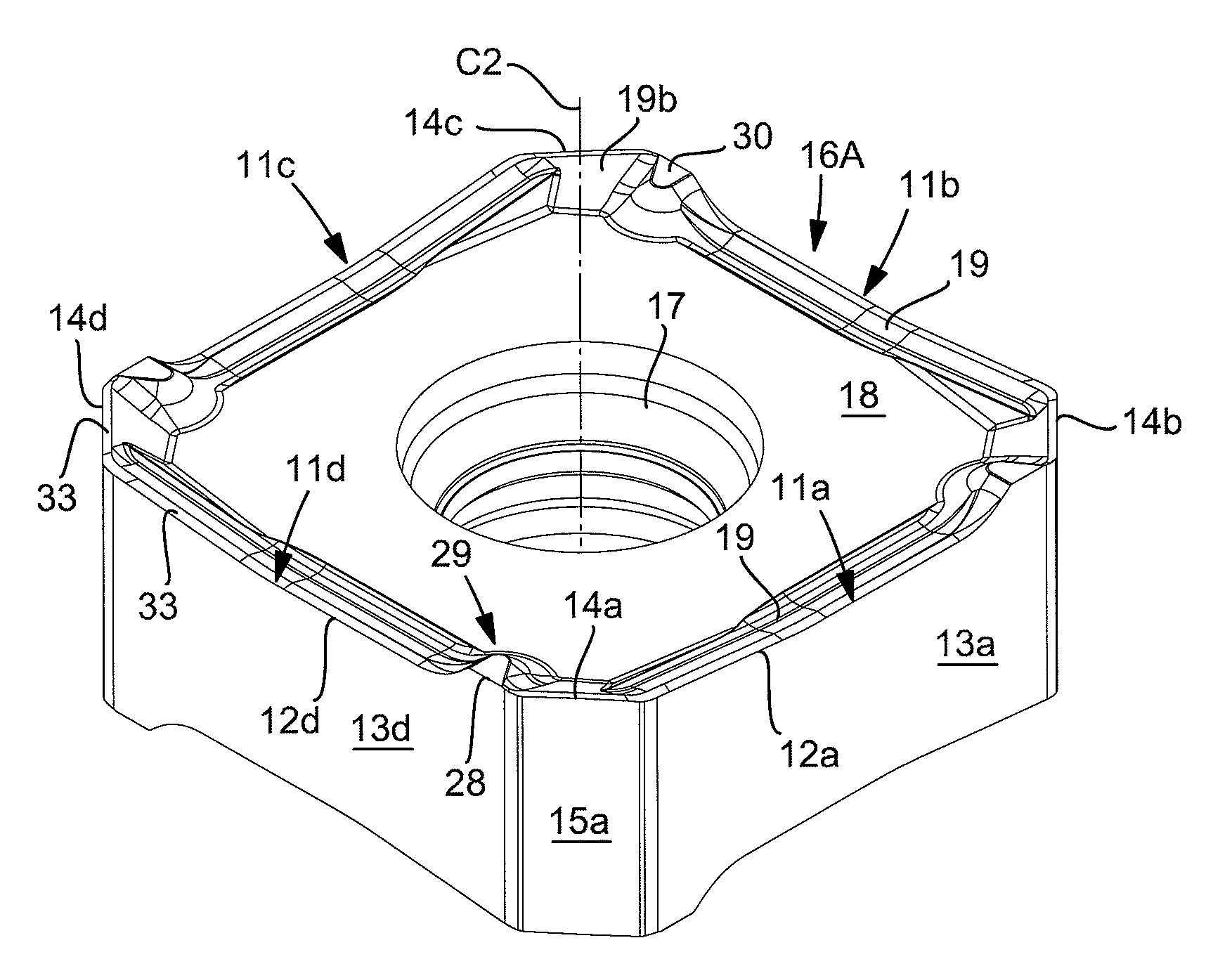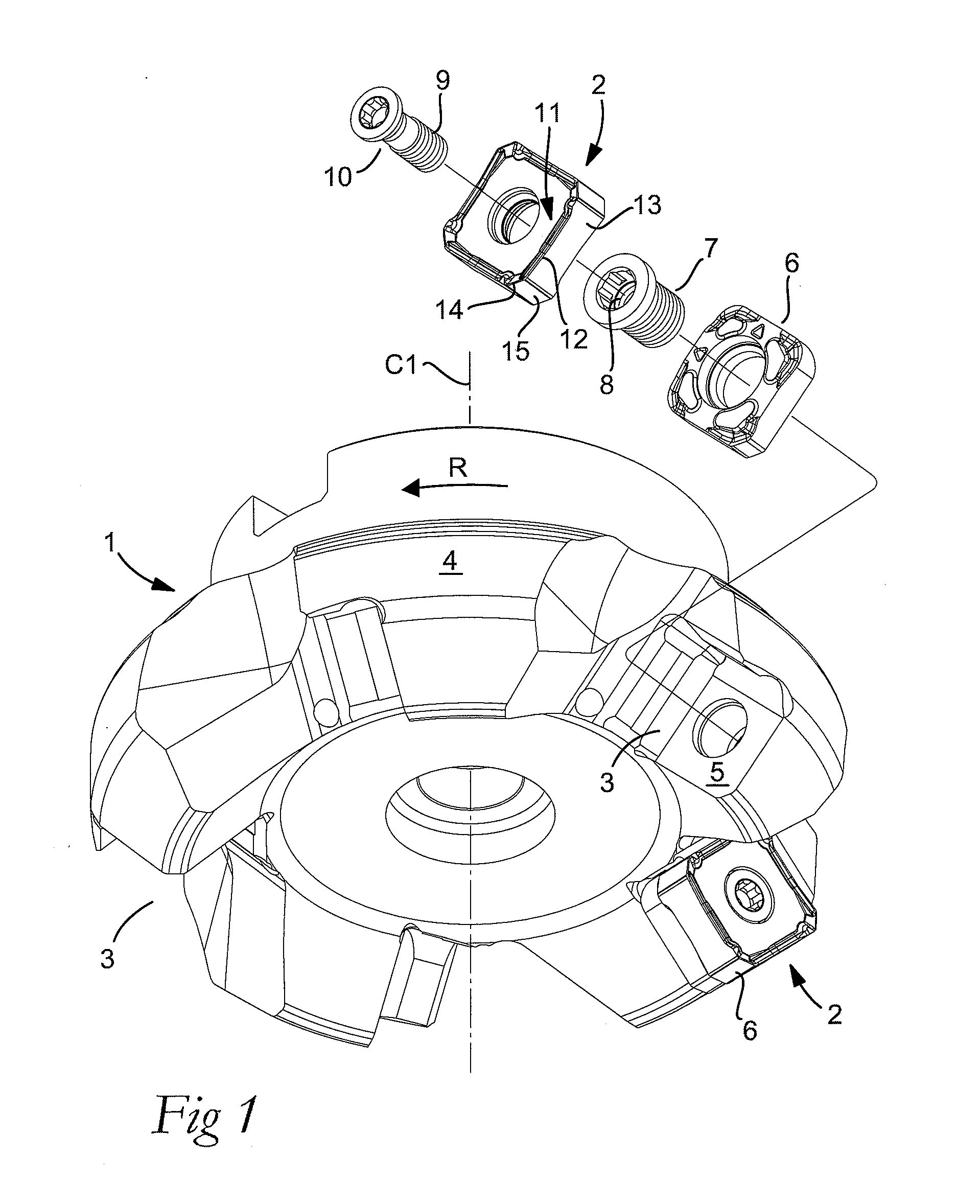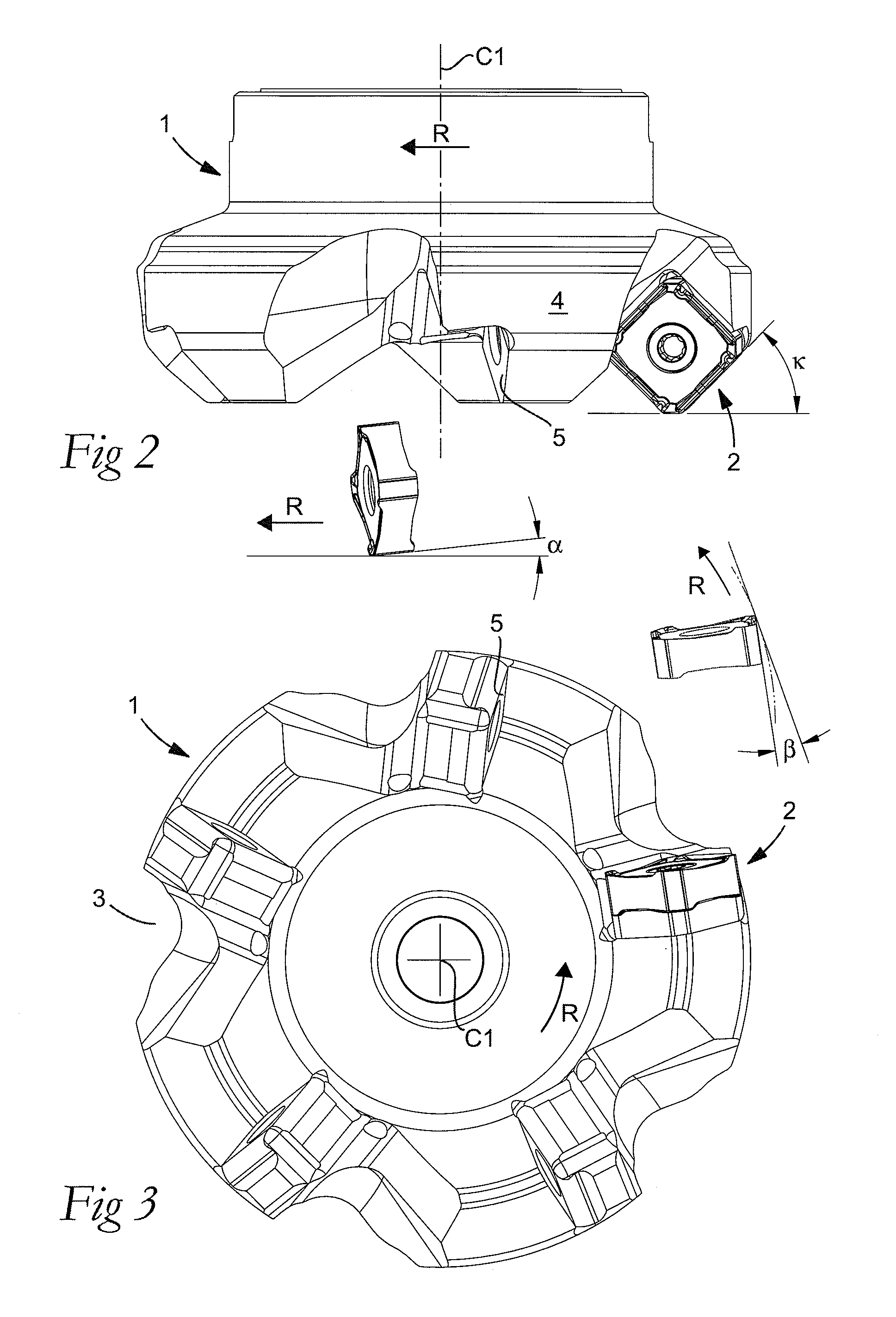Milling insert
a technology of inserts and milling holes, applied in shaping cutters, manufacturing tools, transportation and packaging, etc., can solve the problems of reducing the risk of damage to the sensitive secondary edges, and reducing the risk of damage to the main edg
- Summary
- Abstract
- Description
- Claims
- Application Information
AI Technical Summary
Benefits of technology
Problems solved by technology
Method used
Image
Examples
Embodiment Construction
[0030]In FIGS. 1-3, a milling tool is exemplified in the form of a face mill, which includes a basic body or milling-cutter body 1 and a number of replaceable milling inserts 2 (only one of which is shown mounted in the milling-cutter body). The milling-cutter body 1 is rotatable in the direction of rotation R around a center axis designated C1, and includes, in a front or lower end, a number of chip pockets 3 for each one of the milling inserts 2. In the example, the number of chip pockets amounts to five. The chip pockets 3 are recessed in a rotationally symmetrical envelope surface 4 and include a seating or insert seat, which is represented by a plane bottom surface 5. Although it is fully possible to apply the individual milling insert directly against the bottom surface 5, in this case a shim plate 6 is arranged between the bottom surface 5 and the milling insert 2. This shim plate is kept semi-permanently fixed against the bottom surface 5 by a tubular screw 7, in the female ...
PUM
| Property | Measurement | Unit |
|---|---|---|
| Angle | aaaaa | aaaaa |
| Angle | aaaaa | aaaaa |
| Angle | aaaaa | aaaaa |
Abstract
Description
Claims
Application Information
 Login to View More
Login to View More - R&D
- Intellectual Property
- Life Sciences
- Materials
- Tech Scout
- Unparalleled Data Quality
- Higher Quality Content
- 60% Fewer Hallucinations
Browse by: Latest US Patents, China's latest patents, Technical Efficacy Thesaurus, Application Domain, Technology Topic, Popular Technical Reports.
© 2025 PatSnap. All rights reserved.Legal|Privacy policy|Modern Slavery Act Transparency Statement|Sitemap|About US| Contact US: help@patsnap.com



